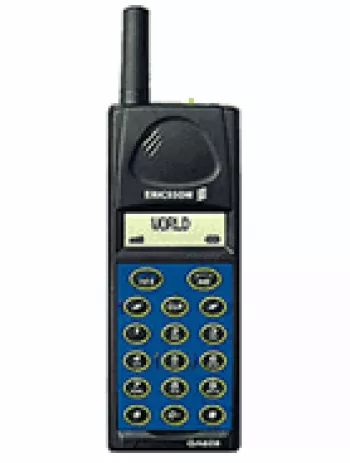
Introduction to Ericsson T29s
The Ericsson T29s was a remarkable feature phone introduced in the early 2000s, showcasing the technological state of mobile devices at the time. Released in February 2001, the device presented a combination of design simplicity and essential functionality that served the communication needs of its users. Despite being discontinued, the T29s remains a nostalgic piece for many mobile enthusiasts and collectors. This article will dive into the various aspects of this phone, including its design, specifications, and the user experience it offered.
Design and Build Quality
The Ericsson T29s is characterized by its compact and durable design. The phone's dimensions are 101 x 49 x 20 mm, making it a pocket-friendly device suited for ease of use and convenience. Weighing only 95 grams, the T29s was light enough for prolonged use without causing discomfort. It featured a clamshell form factor, which was relatively unique and highly popular during its time, providing extra protection for the screen and keys.
The device came in two striking colors: Amethyst Purple and Sapphire Blue, offering some personalization for users. The cool tones of these color options gave the T29s a sophisticated look. The build quality of the Ericsson T29s was robust, as it was known to withstand the occasional drop, common with feature phones of that era.
Display and User Interface
The Ericsson T29s was equipped with a grayscale graphic display, which was typical for feature phones of the early 2000s. The resolution of the screen was 101 x 33 pixels, capable of displaying up to 3 lines of text with 12 characters each. While by today's standards this may seem limited, at the time, it provided adequate utility for performing basic functions such as reading SMS and navigating menus.
Despite the monochrome display, the user interface was designed to be intuitive and user-friendly. The use of icon-based navigation combined with tactile feedback from the physical buttons made the phone's interface straightforward for new users.
Battery Life
The Ericsson T29s was powered by a removable NiMH 600mAh battery. One of the noteworthy features of this phone was its impressive battery life. The phone could last up to 150 hours on standby and offered up to 7 hours of talk time. Given the limited power requirements of the phone, such battery performance was quite significant and a major selling point for users who needed reliability throughout the day without frequent charging.
Performance and Connectivity
As a feature phone, the Ericsson T29s was primarily designed for basic communication functionality rather than the multitasking capabilities of modern smartphones. It operated on the GSM 900/1800 bands, which were widespread worldwide at the time.
Connectivity options were minimal; the phone did not have GPRS, EDGE, Bluetooth, WLAN, or USB capabilities. The lack of these now-standard features highlights how the phone was intended for core telecommunication purposes. Messaging was available through SMS and EMS, and for navigation, it featured a basic WAP 1.1 browser, reflecting the early stages of mobile internet exploration.
Sound and Alert Features
The device did not include a loudspeaker or a 3.5mm audio jack, limiting its capacity for media playback. However, it supported monophonic ringtones, which users could download or compose, allowing for a personalized auditory experience for calls and SMS alerts. Alert types included vibration and downloadable ringtones, which were significant aspects of personalizing a user's phone experience during this era.
Additional Features
Although simple, the Ericsson T29s included several built-in features that enhanced user experience. It had a phonebook capacity for 200 contacts, a more than adequate number for most users at the time. Call records could store up to 10 entries for received, dialed, and missed calls, which was useful for managing call history.
Other handy features included a clock and alarm function, adding to the utility of the phone beyond communication. Additionally, the Ericsson T29s came preloaded with five games, providing some lightweight entertainment during downtime. Language support was comprehensive, with options for English and many Asian languages, extending its usability to a broader audience.
Conclusion
The Ericsson T29s is an emblematic feature phone from the early 2000s, representing a time when mobile phones were primarily for voice calls and messaging. Its durable build, compact design, and reliable battery life made it a favorite among users who valued practicality and simplicity. Although it pales in comparison to the capabilities of modern smartphones, the T29s holds a place in the history of mobile technology as a testament to the advancements over the years. For those who used it, the phone remains a nostalgic reminder of the early days of mobile communication.
Key Features of Ericsson T29s
- Lightweight and compact design: 95 g with dimensions of 101 x 49 x 20 mm
- GSM 900/1800 network compatibility
- Grayscale graphic display with resolution of 101 x 33 pixels
- Phonebook capacity for up to 200 contacts
- Call record log for 10 received, dialed, and missed calls
- Supports SMS and EMS messaging
- WAP 1.1 browser for basic internet access
- Preloaded with 5 games
- Extensive language support including English and many Asian languages
- Removable NiMH battery providing up to 150 hours of standby and 7 hours of talk time
- Available in two colors: Amethyst Purple and Sapphire Blue
Disadvantages of Ericsson T29s
- No GPRS or EDGE support for data connectivity.
- Discontinued status, making it difficult to find spare parts or support.
- Grayscale graphic display with low resolution (101 x 33 pixels).
- Lack of expandable memory (no card slot available).
- No integrated camera.
- No loudspeaker and no 3.5mm headphone jack.
- No Bluetooth, WLAN, or radio connectivity.
- No GPS positioning features.
- Basic messaging capabilities limited to SMS and EMS.
- No support for Java applications.


View Also
More Phones
All Rights Reserved +14266 Phones © Mobilawy 2025
























